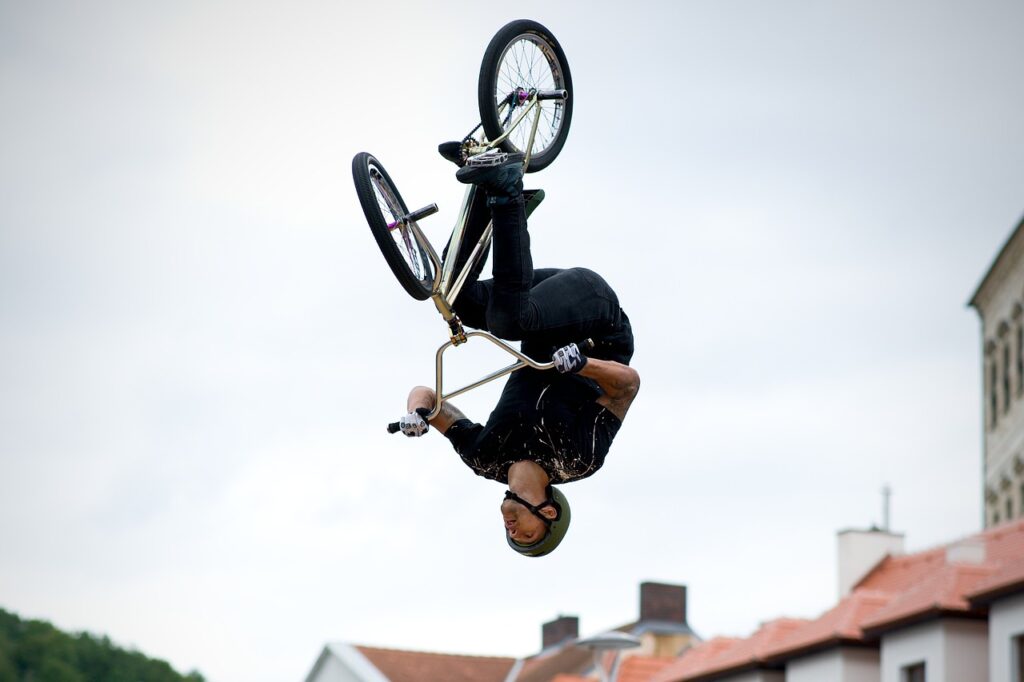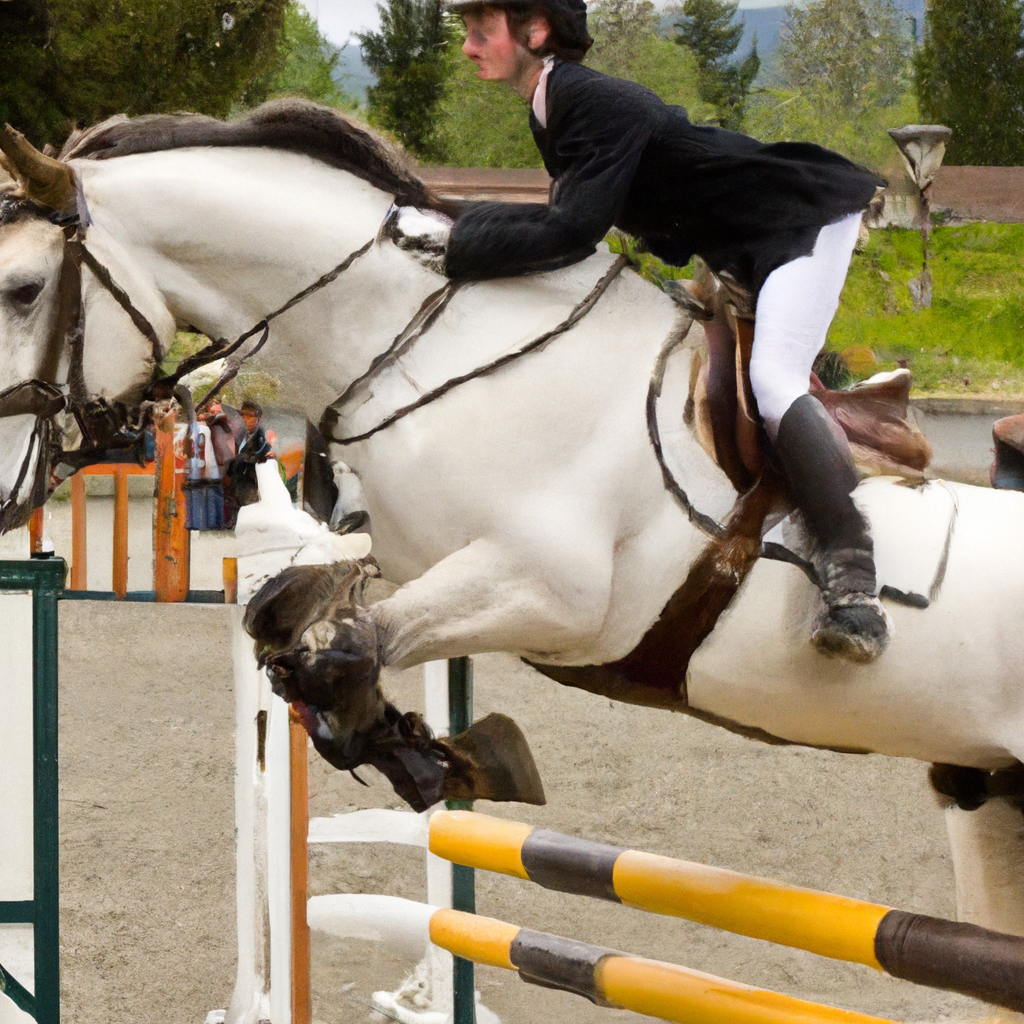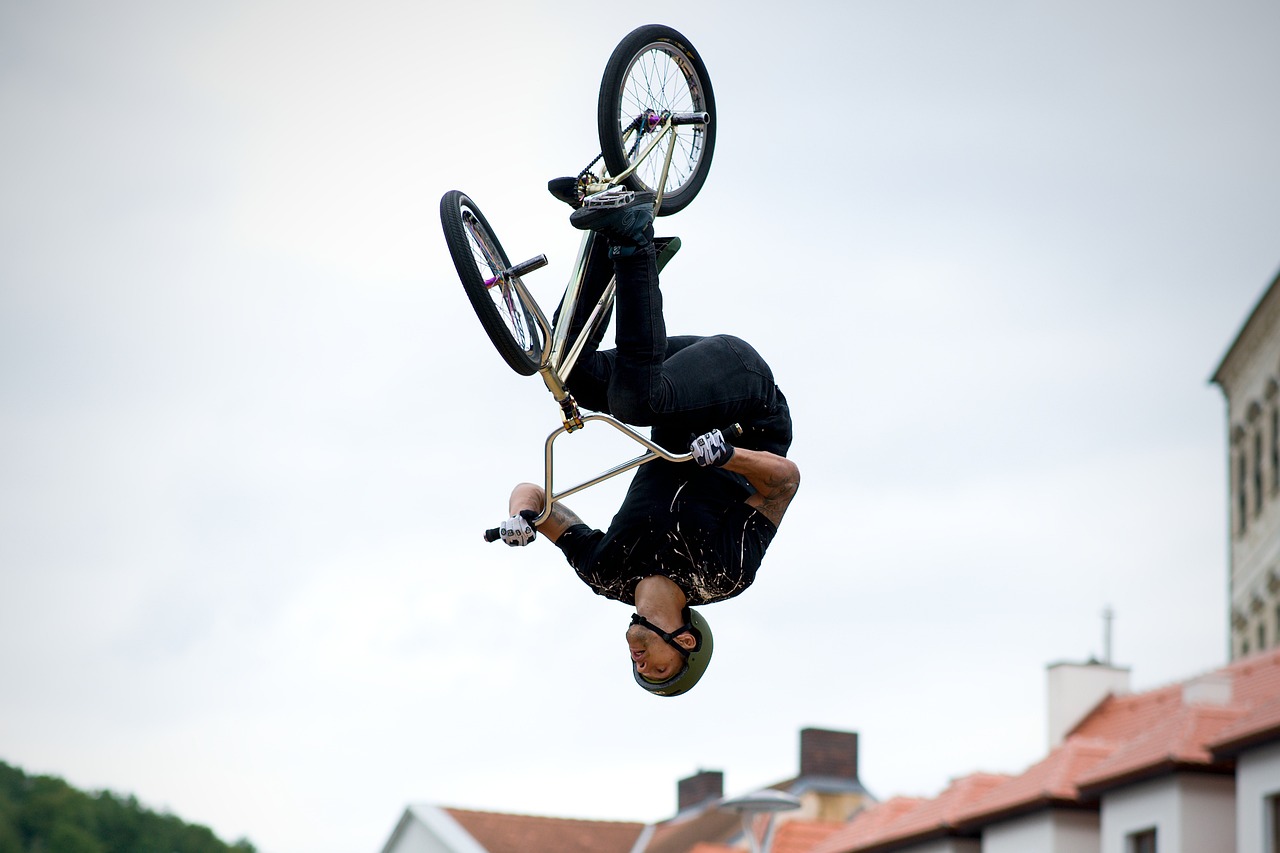In “Discovering the Art of Show Jumping in Horseback Riding,” you will explore the thrilling and visually captivating world of show jumping. Show jumping is a discipline within horseback riding that requires both horse and rider to navigate a course of obstacles, showcasing their skill, precision, and grace. This article aims to provide insight into the intricacies of show jumping, revealing the technical aspects, training methods, and the inherent beauty of this equestrian sport. So, saddle up and get ready to dive into the artistry and excitement of show jumping!
The Basics of Show Jumping
Show jumping is a popular and thrilling equestrian sport that combines skill, athleticism, and precision. In this discipline, horse and rider navigate a series of obstacles, known as jumps, within an arena or on a course. The objective is to clear each jump cleanly, without knocking down any poles or refusing any jumps. It requires teamwork, communication, and a strong bond between horse and rider.
What is show jumping?
Show jumping is a competitive sport that tests the ability of a horse and rider to navigate a course of jumps. The jumps can vary in height and width, and may include combinations, doubles, and related distances. The goal is to complete the course in the fastest time possible, while accumulating as few faults as possible. Show jumping is part of the larger discipline of equestrianism and is often seen at horse shows, competitions, and even the Olympics.
History of show jumping
The origins of show jumping can be traced back to the military cavalry, where it was initially developed as a way to train and assess the capabilities of horses and riders. Over time, it evolved into a popular sport and has gained international recognition. Show jumping made its Olympic debut in 1900 and has since become one of the most watched and admired equestrian events worldwide.
Equipment used in show jumping
To participate in show jumping, both the horse and the rider need specific equipment. The horse requires a well-fitted saddle and bridle to ensure comfort and control. Jumping boots and bandages may be used to protect the horse’s legs from potential injuries caused by jumping. The rider must wear a helmet for safety, along with appropriate attire such as breeches, boots, and a protective vest if desired. Various bits, martingales, and spurs may be used to aid in communication and control between horse and rider.
Training for Show Jumping
A well-trained horse is essential for success in show jumping. Training involves building a horse’s strength, agility, and responsiveness, as well as the rider’s ability to effectively communicate with the horse.
Importance of a well-trained horse
In show jumping, a well-trained horse is crucial as they are responsible for clearing the jumps safely and efficiently. A trained horse understands the rider’s cues and is responsive to their aids, allowing for better communication and control. Training encompasses various aspects, including flatwork, gymnastic exercises, and jumping practice, all tailored to develop the horse’s physical abilities and mental focus needed for the demands of show jumping.
Rider’s role in show jumping
The rider plays a pivotal role in show jumping, requiring a combination of skill, finesse, and athleticism. They must have a solid position and balance in the saddle, maintaining a correct posture while remaining flexible and adaptable to the horse’s movements. The rider’s aids, such as leg pressure, rein contact, and body position, are used to guide the horse and communicate the intended directions and jumps.
Building strength and agility
To excel in show jumping, both horse and rider require strength and agility. Regular exercise and conditioning are essential for building the necessary muscle tone and endurance. Groundwork exercises, lunging, and flatwork help improve the horse’s balance, suppleness, and responsiveness. Meanwhile, riders can incorporate strength-training exercises, such as core workouts and cardio routines, to enhance their own fitness and stability.
Show jumping exercises and techniques
Various exercises and techniques can improve a horse’s jumping ability and a rider’s skill set. Gridwork, which involves a series of jumps arranged in a precise pattern, helps horses develop their scope, technique, and rhythm. Related distance practice teaches horses to adjust their stride length to accommodate different combinations of jumps. Poles, cavaletti, and small jumps can be used to enhance the horse’s coordination and accuracy. Practicing different types of jumps, such as verticals, oxers, and spreads, familiarizes both horse and rider with the variety of challenges they may encounter in show jumping competitions.

Understanding Show Jumping Courses
Show jumping courses are carefully designed to test horse and rider’s abilities while creating an engaging and fair competition.
Different types of show jumping courses
Show jumping courses can vary in complexity and difficulty, depending on the level of competition. A simple course may consist of a few straightforward jumps, while more advanced courses often include challenging combinations, technical lines, and tight turns. Show jumping courses may also incorporate different types of jumps, such as water jumps, walls, and liverpools, to add variety and challenge.
Course design and obstacle placements
Course designers have the responsibility of creating courses that are both aesthetically pleasing and challenging. They strategically place jumps at various distances and angles to test the horse’s scope, agility, and adjustability. The course design considers factors such as the arena size, the level of competition, and the skill sets of the participating horses and riders. The placement of jumps, called the “track,” determines the most efficient and effective route for the horse and rider to navigate the course.
Walk-throughs and course analysis
Before competing, riders have the opportunity to walk the show jumping course to analyze its components and plan their approach. Walking the course allows riders to visually assess the distances, angles, and technical challenges presented by each jump. Riders can strategize their lines, decide where to collect or extend their horse’s stride, and identify potential trouble spots. Analyzing the course is essential in developing a successful plan to navigate the jumps accurately and efficiently.
Jumping Techniques
Jumping techniques are crucial for clearing the jumps successfully while maintaining balance and efficiency.
Approaching the jump
The approach to a jump is crucial in setting up a successful jump. Riders must establish a rhythm, maintain a balanced position, and establish a suitable speed approaching the jump. Proper communication with the horse is key to achieving a smooth approach, ensuring the horse understands the intended direction and height of the jump.
Finding the right take-off point
Timing and accuracy are essential in finding the right take-off point for each jump. The take-off point determines the horse’s trajectory and the arc it will follow over the jump. Riders must judge the distance and adjust their horse’s stride to achieve the optimal take-off point. This requires good judgment, feel, and experience to assess and execute the appropriate stride length and pace.
Jumping styles and positions
Show jumping riders employ different jumping styles and positions, depending on the horse’s individual needs and jumping style. Riders may choose to ride in a forward seat, with a more inclined position over the horse’s withers, or a more upright position, commonly seen in hunter-style courses. The rider’s position in the air depends on the horse’s jumping style, with some horses requiring a more supportive or allowing ride.
Maintaining balance and rhythm
Maintaining balance and rhythm while jumping is critical for a successful and harmonious round. Riders must remain centered and secure in the saddle, distributing their weight evenly. A steady rhythm enables the horse to gauge and adjust its stride length, resulting in smooth and fluid jumps. By maintaining balance and rhythm, riders can help their horses maintain a confident and consistent approach to each jump.

Common Challenges in Show Jumping
Show jumping presents various challenges that riders and horses must overcome for successful rounds.
Refusals and run-outs
Refusals occur when a horse refuses to jump or runs out to the side instead. This may happen due to lack of confidence, poor preparation, or miscommunication between horse and rider. Addressing refusals requires effective training, clear communication, and confidence-building exercises. It is essential to address the underlying issue causing the refusal and work to build the horse’s trust and confidence.
Knocking down poles
Knocking down poles, also known as rails, is a common fault in show jumping. Horses may hit or dislodge a pole with their hooves or legs, resulting in penalties. This can occur due to improper technique, lack of scope, or rider errors. Improving the horse’s technique, such as encouraging a rounder and more careful jump, and ensuring proper rider position and balance are key in preventing knocked down poles.
Time penalties
In show jumping competitions, riders must complete the course within a specified time limit. Time penalties can be incurred if the rider exceeds the time allowed. Balancing speed and accuracy is crucial in avoiding time penalties. Riders must plan their lines and adjust their pace accordingly to navigate the course efficiently while maintaining control and accuracy.
Dealing with distractions
Show jumping arenas can be busy environments with various distractions in the surroundings. Common distractions include spectators, flags, banners, and other horses. Horses may become distracted or nervous, affecting their performance. Training horses to remain focused, desensitizing them to common distractions, and gradual exposure to show environments are essential in minimizing the impact of distractions.
Competitive Show Jumping
Competitive show jumping offers various levels of competitions, including prestigious events and opportunities to represent one’s country.
Levels of show jumping competitions
Show jumping competitions are typically divided into different levels or classes, based on the difficulty of jumps and the skill level of the riders. Common levels include beginner/novice, intermediate, advanced, and Grand Prix. Riders progress through the levels as they gain experience and successfully meet the requirements of each level.
Show jumping at the Olympics
Show jumping has been an Olympic sport since 1900, showcasing the world’s top riders and horses. The Olympic show jumping competition consists of numerous rounds, with riders accumulating faults that carry over from round to round. A jump-off round may determine the winners in case of a tie. The Olympic Games provide an unparalleled opportunity for riders to compete at the highest level and represent their countries.
Qualifying for higher-level competitions
To compete at higher-level show jumping competitions, riders must typically meet specific qualifying criteria. This may include achieving certain rankings, accumulating a set number of points in lower level competitions, or receiving invitations. Qualifying requirements vary depending on the event, federation, or association governing the competition.
Tips for successful competition
Successful show jumping competitions require careful preparation and execution. Riders should establish a consistent training routine, work closely with their coach or trainer, and set realistic goals. Show preparation may involve ensuring the horse’s fitness, practicing specific skills, and familiarizing them with the show environment. Mental preparation is also crucial, focusing on confidence, focus, and a positive mindset. Taking care of logistics, such as proper entry and registration, and adequate warm-up before competing, are vital aspects of ensuring a successful competition.

Show Jumping Equipment
Several pieces of equipment are essential for both the horse and rider to participate in show jumping.
Saddles and bridles
Show jumping saddles are specifically designed to provide a secure and balanced seat for the rider while allowing freedom of movement for the horse. These saddles generally have forward-cut flaps to accommodate a shorter stirrup length and a more upright position. Bridles used in show jumping typically incorporate a snaffle bit and reins to allow clear communication between horse and rider.
Protective gear for horse and rider
Protective gear is crucial in ensuring the safety and well-being of both horse and rider during show jumping. Riders must wear a properly fitted helmet to protect against head injuries. Safety vests may also be worn for added protection. Horses may wear protective boots or bandages on their legs to minimize the risk of injury caused by hitting the jumps or themselves.
Jumping boots and bandages
Jumping boots are designed to protect a horse’s legs during jumping, providing support and cushioning. These boots typically cover the horse’s cannons, tendons, and fetlocks. Another option is the use of bandages, which can offer similar protection and support when correctly applied. The choice between boots and bandages depends on personal preference, individual horse needs, and competition rules.
Choosing the right show jumping equipment
When selecting show jumping equipment, it is important to consider factors such as fit, quality, and suitability for both horse and rider. Proper fit ensures comfort and functionality, allowing the horse and rider to perform at their best. Quality equipment is made to withstand the demands of show jumping and ensures longevity. Finally, the suitability of the equipment should align with the horse’s individual needs, taking into account factors such as conformation, jumping style, and personal preferences.
Famous Show Jumpers
Show jumping has seen numerous talented and accomplished riders throughout history. Here are a few famous show jumpers who have left their mark on the sport:
Beezie Madden
Beezie Madden is a renowned American show jumper who has represented her country in multiple Olympic Games and World Equestrian Games. She has achieved remarkable success, winning numerous Grand Prix events, including the prestigious Rolex Grand Prix at the CHIO Aachen. Madden is known for her exceptional horsemanship, skill, and consistency in the show jumping arena.
Nick Skelton
Nick Skelton is a British show jumper widely considered a legend in the sport. He has had a remarkable career, winning numerous championships and accolades. Skelton’s most memorable achievement was winning an individual gold medal at the Rio 2016 Olympics, becoming the oldest Olympic champion in equestrian history. He is known for his exceptional talent, precision, and ability to produce clear rounds under pressure.
Meredith Michaels-Beerbaum
Meredith Michaels-Beerbaum, a German-born show jumper, has made a significant impact on the sport. She achieved success at the highest level, winning numerous Grand Prix events and representing Germany in international competitions. Michaels-Beerbaum is known for her technical expertise, meticulous preparation, and exceptional partnership with her horses.
Eric Lamaze
Eric Lamaze is a Canadian show jumper who has left an indelible mark on the sport. He has competed in multiple Olympic Games, winning numerous medals, including an individual gold in Beijing 2008. Lamaze is known for his natural talent, boldness, and exceptional horsemanship. Despite personal challenges, he continues to be a respected and accomplished competitor.

Show Jumping Events and Organizations
Show jumping events and organizations provide platforms for riders to compete at various levels and venues.
FEI World Cup Jumping
The FEI World Cup Jumping is an international series of show jumping competitions organized by the Fédération Equestre Internationale (FEI). This prestigious event showcases the world’s top riders and horses competing in indoor arenas around the globe. Riders accumulate points throughout the season to qualify for the World Cup Final, where they compete for the coveted title.
Longines Global Champions Tour
The Longines Global Champions Tour is a high-profile show jumping series that attracts top riders and horses from around the world. The tour features a unique concept of hosting events in iconic cities, providing an exciting and glamorous backdrop to the competitions. The series culminates in the Global Champions Super Grand Prix, where the best of the best compete for the ultimate title.
United States Hunter Jumper Association
The United States Hunter Jumper Association (USHJA) is an organization dedicated to promoting and supporting the hunter and jumper disciplines in the United States. It offers various programs, competitions, and educational opportunities for riders of all levels, from grassroots to the highest levels of competition. The USHJA provides a comprehensive framework for riders to develop their skills and progress in the sport.
British Showjumping Association
The British Showjumping Association (BSJA) is the governing body for show jumping in Great Britain. The association regulates and organizes show jumping competitions, provides training and educational programs, and selects teams to represent Britain at international events. The BSJA aims to foster the development of excellence and sportsmanship within the British show jumping community.
The Show Jumping Community
Being part of the show jumping community offers riders a sense of belonging, support, and camaraderie.
Joining a show jumping club or association
Joining a show jumping club or association provides riders with a valuable network of like-minded individuals and resources. These organizations offer access to training clinics, shows, educational opportunities, and social events. Being part of a club or association allows riders to exchange experiences, gain knowledge, and feel a sense of belonging within the show jumping community.
Training with a show jumping instructor
Working with a qualified show jumping instructor is essential for riders to improve their skills and progress in the sport. Show jumping instructors provide guidance, correct technique, and develop strategies tailored to each rider’s goals and abilities. They offer valuable feedback, help riders overcome challenges, and inspire continuous growth and improvement.
Attending show jumping events
Attending show jumping events as a participant or spectator is an excellent way to immerse oneself in the excitement and atmosphere of the sport. Show jumping events offer riders an opportunity to showcase their skills, receive feedback from judges, and benchmark their progress against competitors. Spectators can witness thrilling rounds, witness top riders in action, and gain inspiration and motivation to further engage with the sport.
Building camaraderie in the show jumping community
The show jumping community fosters a sense of camaraderie, friendship, and support among riders. Whether competing against each other or cheering for one another, riders often form lifelong connections and friendships within the equestrian world. This supportive community shares a passion for the sport, celebrates achievements, and provides encouragement during setbacks, creating a lasting bond that extends beyond the show jumping arena.

Understanding Show Jumping Scoring
Understanding the scoring criteria in show jumping allows riders to assess their performance and strive for improvement.
Scoring criteria in show jumping
Show jumping is scored based on a combination of faults and penalties. Faults are incurred when a horse refuses a jump, knocks down a pole, or exceeds a time limit. These faults are converted into penalties, with each fault carrying a specific penalty point value. The horse and rider with the fewest faults and penalties, completed within the time allowed, achieve the highest scores.
Faults and penalties
Common faults in show jumping include refusals, knockdowns, and time penalties. Refusals occur when a horse refuses to jump or runs out to the side of a jump. Knockdowns or dislodging of a pole can result from hitting the jump with any part of the horse’s body. Time penalties are incurred when a rider exceeds the time allowed for completion of the course. Each fault carries a specific penalty, and the rider with the fewest faults and penalties wins.
Tie-breaking methods
In the event of a tie, various tie-breaking methods may be employed to determine the winner. The most common tie-breaking method is a jump-off, where riders who are tied compete in a shortened course over a reduced number of jumps. The jump-off aims to differentiate between tied competitors by testing speed, accuracy, and the ability to execute sharp turns within a limited time. In other cases, the winner may be determined by evaluating the overall style and technique demonstrated by each rider throughout their rounds.
